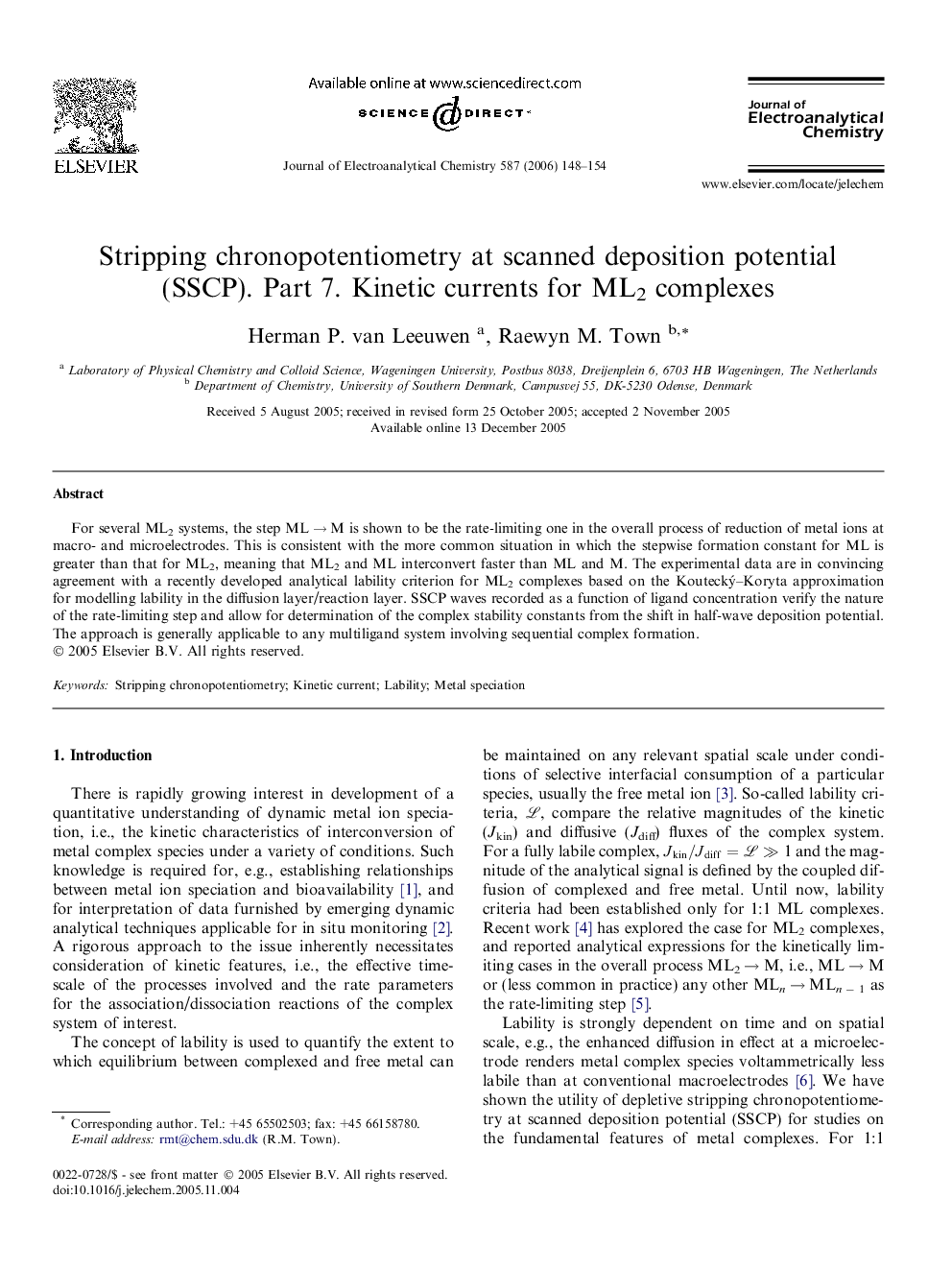| Article ID | Journal | Published Year | Pages | File Type |
|---|---|---|---|---|
| 221497 | Journal of Electroanalytical Chemistry | 2006 | 7 Pages |
For several ML2 systems, the step ML → M is shown to be the rate-limiting one in the overall process of reduction of metal ions at macro- and microelectrodes. This is consistent with the more common situation in which the stepwise formation constant for ML is greater than that for ML2, meaning that ML2 and ML interconvert faster than ML and M. The experimental data are in convincing agreement with a recently developed analytical lability criterion for ML2 complexes based on the Koutecký–Koryta approximation for modelling lability in the diffusion layer/reaction layer. SSCP waves recorded as a function of ligand concentration verify the nature of the rate-limiting step and allow for determination of the complex stability constants from the shift in half-wave deposition potential. The approach is generally applicable to any multiligand system involving sequential complex formation.
